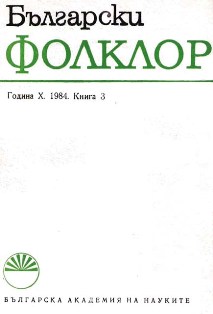За скулптурата по църковните сгради от Възраждането
On Sculpture upon Church Edifices from the National Revival Period
Author(s): Iva LyubenovaSubject(s): Anthropology
Published by: Институт за етнология и фолклористика с Етнографски музей при БАН
Summary/Abstract: In the history of Bulgarian fine arts 18th and 19th century sculpture has its own independent significance which is closely linked with the idea of continuity in Bulgarian culture. By means of it the peculiarities of the spirit of the Bulgarian National Revival could be revealed against the background of the thousand years-old Bulgarian national heritage. The National Revival sculpture had, as a starting point in its development, the historical continuity through which the ancestral ideas of unity between man and the world and their generalizations in time and space were preserved for future generations. It drew invigorating power on the pinnacles in the development of Bulgarian medieval culture in order to testify in 18th and 19th centuries to the spirit and the cultural life of the Bulgarian people during the National Revival. The fundamental aesthetic purpose of this sculpture was to plastically enrich architecture and contribute to its monumental character. Its chief task in terms of ideas was connected with religious and mythological, as well as with historical and patriotic semantics. It was this semantics that determined its most popular subject-matters and its conventional quality. The means of composition with these subject-matters were of such a nature that did not allow for an individualization of the images. Decorative, sign and symbolic elements prevail in them. The dual slavish submission of Bulgaria in 18th and 19th centuries to Ottoman feudalism and to the Phanariot Church-resulted in a certain fading of the ancient tradition in sculpture all over our lands. With no official secular and clerical power of their own, the Bulgarian ethnos strove after defending their national roots. They turned towards the world of their pagan ancestors, towards literary and artistic models from the times of Bulgarian spiritual and political sway, which had long passed already in the 14th century, and they took the lead in preserving the Bulgarian nationality. Therefore conditions during the National Revival proved to be favourable for the penetration of folklore tradition into the sphere at sculpture. Following the requirements of Christian religion, Bulgarian craftsmen of that period elaborated on a local basis a decorative approach conveying their fidelity to the national element in the centuries-old artistic tradition enriched by local trends and factors.
Journal: Български фолклор
- Issue Year: X/1984
- Issue No: 3
- Page Range: 10-18
- Page Count: 9
- Language: Bulgarian
- Content File-PDF

